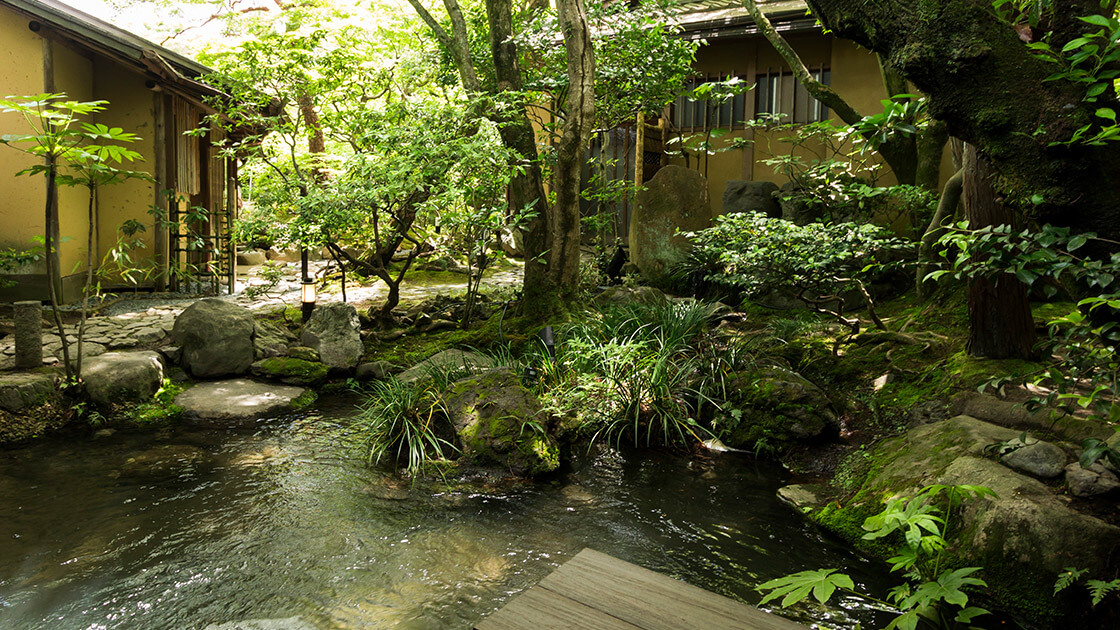Upon entering a narrow side street from the path of Nanzenji Temple, you will find the front gate of Kikusui and then a scenic approach to the main entrance.
The smell of the soil and the faint fragrance of flowers flutter in the wind, and it feels as if the entire living biotope of nature of the garden itself is welcoming its guests.
Arriving at the entrance, your attention will be captured by Nobuyuki Yoshimoto's artwork. The stunning “Carp / Exceeds the Speed of Light” a artwork made of of stainless steel, reflects the image of the powerful and lively koi carp of the garden and also expresses Kikusui’s serene flow of time in the past, present, and future.
Garden to Feel with All Five Senses
On the spacious site of nearly 2710 square meters lies a Japanese garden with a central pond,
created by Ogawa Jihei VII, known as the pioneer of modern gardens.
Sukiya-style buildings, full of the essence of Japanese architecture, stand around this garden and a time of serenity created by the beautiful changing nature of each of the four seasons flow through this space.









